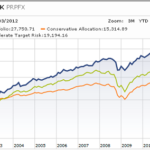While it was readily apparent years ago, and we were reminded again during the 2008-2009 financial crash, markets had temporarily forgotten that municipalities across the nation are virtually insolvent and should already have declared bankruptcy. If they have not yet “restructured” their debt, they should and they will. After decades of politicians writing checks the future generation couldn’t pay by way of lavish public spending sprees, unsustainable defined benefit programs for public workers and lousy investment schemes (Wall Street Collects $4 Billion From Taxpayers as Swaps Backfire), current investors are rightly questioning the ability to meet these debt obligations in the future.
Who Will Blink First?
This has traditionally been a calculus of whether the federal government would allow states to go bankrupt and whether states would allow individual municipalities to go bankrupt. For example, it doesn’t look as though PA is going to allow Harrisburg to go belly up, and could you imagine Illinois going under on Obama’s watch? This type of thinking is what has propped up the NAVs on muni funds since the initial crash in 2008. Granted, investors that unloaded these instruments this summer actually did fairly well. They realized a double digit return on their capital appreciation on top of a tax-free yield in the range of 4-8% annually.
The Voters Spoke – As Europe Burns
However, the tide has turned. Perhaps it was the sentiment amongst voters that overwhelmingly rejected the Democratic party in the House and Senate. Perhaps it was the (unsurprising) inability of the QE2 announcement to actually force rates lower. The 10 Year Yield is higher now than when QE2 was announced, and at the same level as when rumors initially surfaced. Perhaps it’s the public ire in the EU where member state after state must bail out individual country debt through higher public taxes so private banks and bondholders don’t take a haircut (which they should). Heck, individuals can use the debt snowball method, why can’t sovereigns?
Transferring private losses to public debt is going out of style.
There seems to be a real new wave of public sentiment against continued bailouts in the US and abroad, and the investment calculus here may just be that in order to retain political capital, some politicians (especially Republicans) may have to allow municipalities to default rather than blindly bailing them out.
This may be conjecture at this point, a guy trying to make sense of current events and sentiment, but what cannot be ignored is the actually market moves we’ve been seeing in muni bonds. Take a look at a popular muni bond fund run by PIMCO (PMF), which I used to own. Since QE2 was announced in early November, while the S&P500 has been virtually flat, PMF has declined 10%. This is quite a move for the usually tepid muni asset class:
Munis Behaving Badly
AAA munis are now yielding more than treasuries. This is highly abnormal since AAA munis normally yield less because with a (supposed) similar risk profile to similarly dated Treasuries, investors are usually willing to pay more for US Treasuries. This is tax-driven, as Treasury income is taxable whereas most municipal debt is tax-free.  So, for someone in the highest tax bracket it is especially more appealing to own muni bonds compared to Tresuries at similar yields, which forces the spread. This spread is dead.
A Contrarian Approach or Black Swan?
Many investment advisors are now touting an incredible opportunity to swoop in and buy distressed muni bonds given the abnormal spread. The thinking is that this situation won’t last long and when muni bond prices rise again to push the yields below those of Treasuries, it will be a good risk/reward. To the contrary, this may make for an excellent Black Swan Investment. If you foresee a massive wave of new defaults that cannot be stemmed, perhaps the federal government will just have to let the chips fall where they may. Massive debt burdens will have to be restructured. Public sector worker entitlements will have to be reconsidered. Taxpayers will revolt of the notion of continued bailouts and force bondholders to take a haircut – the ultimate Black Swan. To enact, one could simply short popular muni ETFs and Closed End Funds (read more about premiums and discounts on CEFs before proceeding) since retail investors can’t practically short individual muni bonds. Similarly, some of these offer put options as well. If you pick the right one(s) and they implode? This is living “The Big Short” all over again. Just be mindful that muni funds are very specific on type, locale, strategy, etc., so understand the underlying holdings and risk metrics before diving in.
Disclosure: No current position in any municipal instruments.












{ 0 comments… add one now }